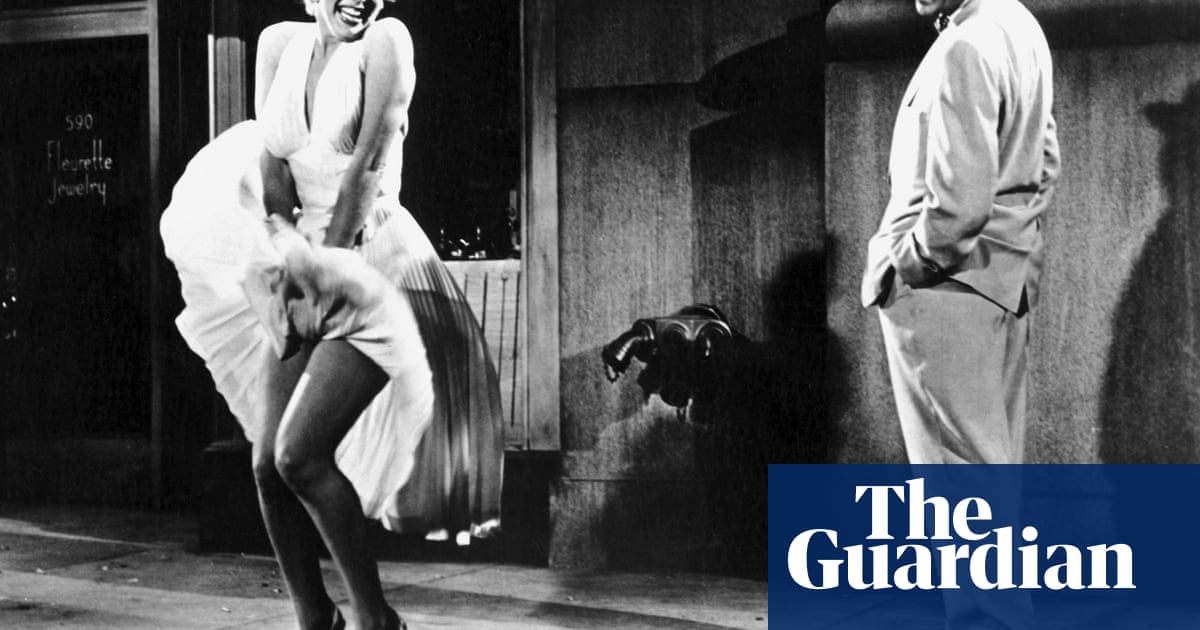One of the patterns that emerges in Conversations With Wilder, a delightfully candid 1999 interview book that the director Cameron Crowe did with his film-making hero, Billy Wilder, is that Wilder tends to look more fondly on his hits than his misses. To him, commercial flops were rarely the result of audiences misunderstanding his work, but a regrettable failure on his part to connect with them. So it’s notable that Wilder didn’t have kind things to say about theMarilyn Monroecomedy The Seven Year Itch, a box-office sensation that’s rightfully settled a few tiers below classics like Double Indemnity, Sunset Boulevard, The Apartment and Some Like It Hot, his brilliant second go-around with Monroe.
A work-for-hire job for Darryl Zanuck at 20th Century Fox, The Seven Year Itch didn’t originate with Wilder, but George Axelrod’s 1952 Broadway comedy about marital wanderlust, with its ping-pong between lustiness and guilt, seemed well-suited to his sensibility. But the real tension that undermines the film is the ping-pong between Monroe’s five-alarm sexuality and the wet-blanket prudishness that keeps putting out the fire. Wilder and Axelrod, who also scripted, were “straitjacketed” by the Hays code, which imposed strict limits on how far the film could go, and Wilder couldn’t work around it. He called it a “nothing picture” because censors neutered a comedy about infidelity. A comedy about mere temptation doesn’t have the same pop.
Seventy years later, The Seven Year Itch may not be remembered as a great movie, but it’ll forever be cherished as a grate movie. Wilder sensed a scene where Monroe, in a form-fitting white dress, positions herself above a subway grate on Lexington Avenue would cause a stir, so he leaned into it, turning the shoot into a media frenzy that yielded one of the signature images of Monroe’s career. It’s also a prime example of the uncorked sexuality that Monroe brought to the table, which even the Hays code couldn’t hope to suppress. On a date with an older, married man – the movie they see, Creature from the Black Lagoon, is much more erotic than this one – her character explains that she likes to feel the wind from passing trains under her dress. She’s unashamed by the feeling.
Yet shame proves to be a heavy anchor for Richard Sherman (Tom Ewell), a middle-aged paperback book publisher whose tendency to daydream about romantic encounters seems to manifest a fantasy girl come to life. After sending his wife, Helen (Evelyn Keyes), and their son off to Maine for hot summer months, Richard toys with how much he’s going to let himself off the leash while he reclaims his bachelorhood. He’s a good boy at first, dining at a vegetarian restaurant because “you can’t run on martinis and Hungarian goulash”. But those martinis can easily be shaken in his Manhattan apartment, and though he keeps his cigarettes under lock and key, it’s only a small hassle to access them when he gets the urge.
Still, there are common urges and then there’s Marilyn Monroe as “the girl”, the bubbly and endlessly accommodating blonde who’s moved into the place upstairs. She nearly kills Richards when a tomato plant on her balcony drops through his lounge chair, but that proves to be enough of a meet-cute to get her to come down for a drink. Before she arrives, he dreams of seducing her with cocktails and Rachmaninoff, but she proves more enticed by the lowbrow appeals of Chopsticks and dipping potato chips in champagne. They’re an odd couple, but nothing seems to turn her off, including his wedding ring, and plenty turns him on, like an “artistic picture” in a bikini she took for a magazine he has on his shelf.
The title The Seven Year Itch refers to a dubious piece of psychology suggesting married men tire of their wives after seven years and start looking around for a mistress. Many of the laughs in Axelrod’s script come from Richard twisting himself into knots over whether he’s that type of guy or not, which the play answers one way and the movie answers another. Wilder does his best to bring Richard’s tortured conscience to visual life, with sequences that toggle between fantasy and reality, creating not only a window into his thinking but also opening up what’s mostly a one-room stage play. The trouble is that Ewell, who originated the role on Broadway, is a bit of a drip as a leading man. (Wilder wanted the then unknown Walter Matthau, who’d have been a terrific choice.)
Virtually all the energy in The Seven Year Itch comes from Monroe, whose sexual confidence is as weirdly innocent as it is incandescent, as if she doesn’t comprehend her own power. (“People keep falling desperately in love with me,” she says, as if it’s a mystery she can’t begin to start cracking.) Referring to her simply as “the girl” is an icky sign of the times, as though Axelrod and Wilder can’t imagine her as a woman who exists apart from Richard’s imagination. But Monroe makes so singular an impression that she dwarfs the film’s ostensible star, who looks one-dimensional and feckless by comparison.
Wilder is right to believe the material might have thrived in an era in which infidelity was allowed to be the theme, because without it, the stakes of The Seven Year Itch are almost non-existent. Monroe should overwhelm Ewell like Barbara Stanwyck does Henry Fonda in The Lady Eve, a comedy that was also made under the code but is arousing and dangerous in a way that The Seven Year Itch never becomes. Monroe may have been the embodiment of temptation in the era, but the possibility of sex is off the table. It’s an itch the film can never scratch.
